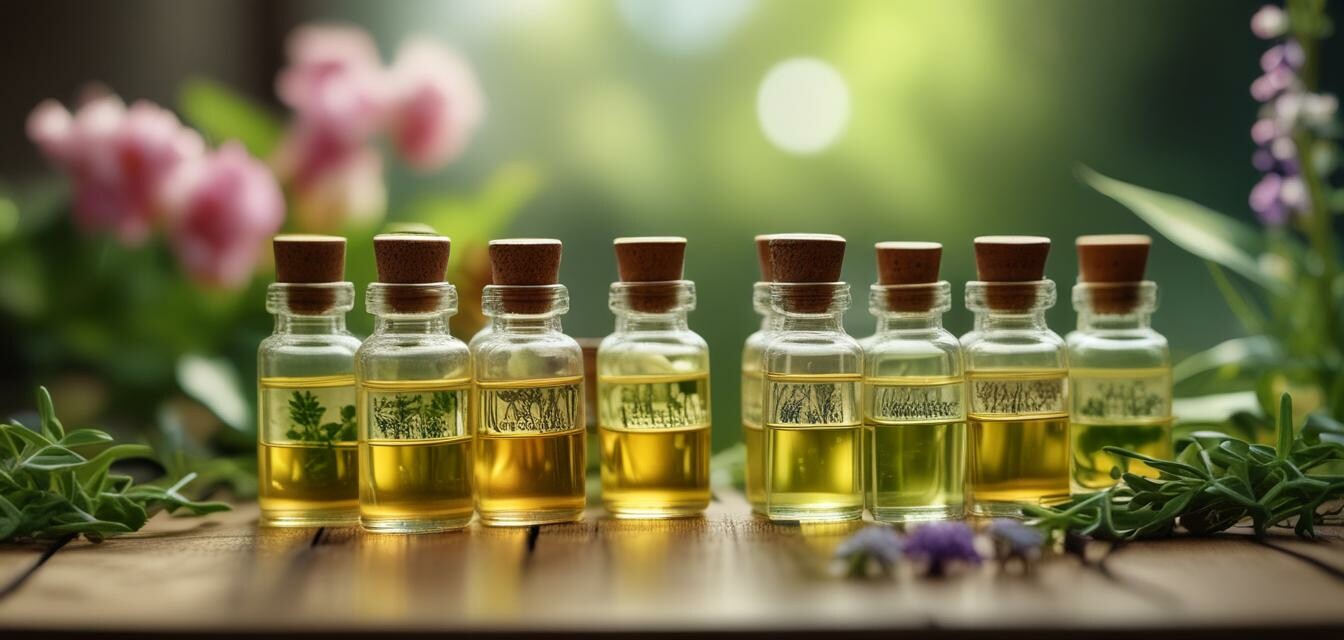
Essential Oils for Every Mood: A 2025 Guide
Key Takeaways
- Essential oils can enhance emotional well-being and support various moods.
- Different oils correspond to specific feelings and atmospheres.
- Methods of use include diffusion, topical application, and inhalation.
- Experimenting with blends can create personalized emotional support.
- Always perform a patch test to avoid skin irritation when applying topically.
Essential oils have become a popular choice for those seeking emotional support and a way to enhance their overall well-being. With a myriad of scents and properties, these oils can influence our moods and help create a positive environment. This guide will explore essential oils that correspond to various moods and provide you with actionable tips on how to incorporate them into your daily life effectively.
Understanding essential oils and moods
It's important to understand that essential oils are highly concentrated extracts derived from plants. Their scents can evoke emotions, stabilize mood, and promote a sense of relaxation or energy. Each essential oil offers unique properties and can cater to different emotional states. Below is a breakdown of essential oils that correspond with various moods:
| Mood | Essential Oils | Common Uses |
|---|---|---|
| Relaxation | Lavender, Chamomile, Ylang Ylang | Diffusion, baths, meditation |
| Happiness | Orange, Bergamot, Grapefruit | Inhalation, room sprays, skin applications |
| Energy | Peppermint, Lemon, Eucalyptus | Aromatherapy, inhalation |
| Focus | Rosemary, Basil, Lemon | Topical application, diffuser blends |
| Calm | Sandalwood, Frankincense, Cedarwood | Meditation, personal inhalers |
How to effectively use essential oils
Implementing essential oils into your daily routine can be as simple as choosing the method that best suits your needs. Here are several effective techniques:
- Diffusion: Add a few drops of your selected essential oil into a diffuser to disperse the scent throughout your space.
- Topical application: Dilute essential oils with a carrier oil and apply them to pulse points or areas of tension. Remember to patch test!
- Inhalation: Inhale directly from the bottle or place a few drops on a tissue to inhale as needed.
- Baths: Generously add essential oils into warm bath water to transform your bathing experience into a relaxing oasis.
Blending essential oils for customized emotional support
Creating your blends can enhance the effectiveness of your essential oils. Here's how you can pair different oils for a unique aromatic experience:
- Choose your base oil, such as Lavender or Chamomile for relaxation.
- Add a mood-boosting oil like Orange or Bergamot.
- Consider a grounding oil, such as Frankincense, to balance the blend.
- Use a diffuser or apply topically based on your experience preferences.
Safe practices for using essential oils
While essential oils can provide numerous benefits, it's essential to use them safely:
Beginner's Section
- Always dilute essential oils with a carrier oil before applying them to your skin.
- Conduct a patch test to check for potential allergies or reactions.
- Use high-quality, pure essential oils for best results; look for reputable brands.
- Store oils in a cool, dark place to preserve their efficacy.
Conclusion
Essential oils offer a versatile approach to supporting emotional wellness. By understanding the connection between mood and scent, you can choose the right oils to suit your needs. Whether you're using them for relaxation or stimulation, experimenting with blends can lead to personalized experiences. Don't hesitate to explore the diverse world of aromatherapy and find what works best for you!
Pros
- Natural alternatives to enhance emotional states.
- Various methods of use for versatility.
- Customizable blends for personalized support.
Cons
- Possible skin irritation if not used properly.
- Quality can vary between brands.
To dive deeper into essential oils, be sure to check out our Buying Guides for more insights on various products that can elevate your wellness and recovery journey.
